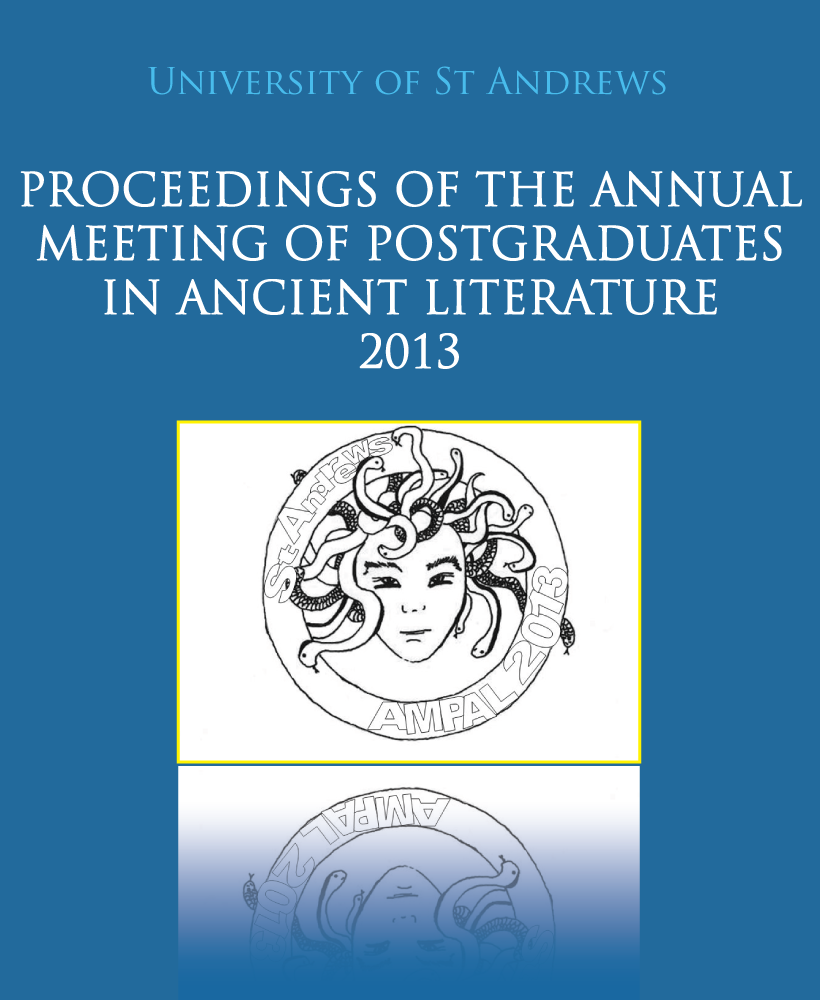UNREALITY INTO REALITY: HOW CHARACTERS OF OVID’S METAMORPHOSES RECEIVE AND (DON'T) ACT ON MYTHS
Main Article Content
Abstract
The inset-narrative structure of Ovid’s Metamorphoses has long been noted as a technique to allow the poet to distort both the timeline and context of his narrative. However, much less attention has been paid to the use of these stories as objects-in-themselves of reception by other characters in the poem. The episodes in Ovid’s inset narratives are certainly not narrated into a void; however, neither are they narrated simply for the direct benefit of the reader of the poem. Their narration can be understood and analysed as directed at certain characters. Consequently, they must be understood as either seeking to effect some (re)action, or at the very least inadvertently effecting such (re)actions.
This paper will attempt to re-examine certain audiences of inset narratives in the Metamorphoses, who are receiving a narrative the same way any other read could be expected to receive one: with either credulity or disbelief, with acceptance or revulsion. More importantly, the reception of inset narratives by the internal audiences is often expected by the narrators to lead to actions, but does not: the crow fails to dissuade the raven from tattling in Book 2; Acoetes is unable to convince Pentheus to accept Bacchus in Book 3. At the same time, some narratives do influence their audiences, whether they intend to or not: Juppiter convinces the council of the gods to consent to the destruction of humanity in Book 1; Minerva is inspired by the Muses in Book 5 to confront Arachne in Book 6. In order to understand these instances of internal reception, it is necessary then to contextualize the subjects of the internal narrative with the speakers, their audiences and their eventual (re)actions. The analysis here will attempt to demonstrate that acts of internal reception dramatise a struggle for the interpretation of myth, and its translation into the poem’s reality.
Article Details

This work is licensed under a Creative Commons Attribution-NonCommercial-NoDerivatives 4.0 International License.
Authors who publish with this journal agree to the following terms:- Authors retain copyright and grant the journal right of first publication with the work simultaneously licensed under a Creative Commons Attribution-NonCommercial-NoDerivs License that allows others to share the work with an acknowledgement of the work's authorship and initial publication in this journal.
- Authors are able to enter into separate, additional contractual arrangements for the non-exclusive distribution of the journal's published version of the work (e.g., post it to an institutional repository or publish it in a book), with an acknowledgement of its initial publication in this journal.
- Authors are permitted and encouraged to post their work online (e.g., in institutional repositories or on their website) prior to and during the submission process, as it can lead to productive exchanges, as well as earlier and greater citation of published work (See The Effect of Open Access).
Authors retain control over their work, and may request that their paper is removed from this collection in the future by contacting the journal hosting service.

